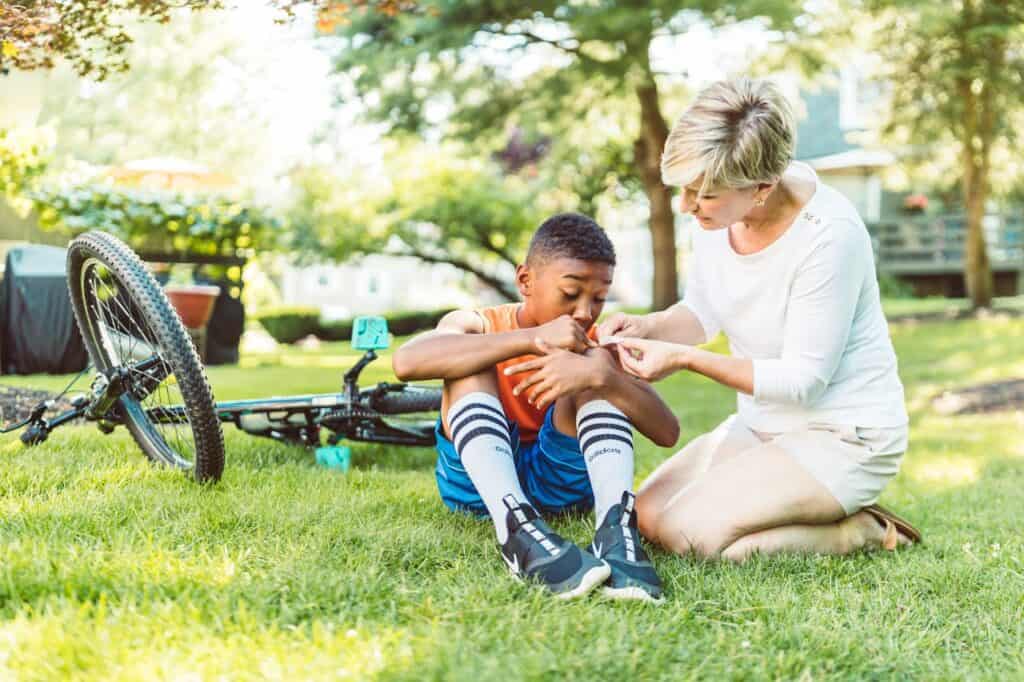Handling Big Emotions in Little Kids: A Parent’s Guide
Young children experience emotions with remarkable intensity but lack the vocabulary and coping skills to manage these feelings effectively. A toddler’s meltdown over a broken cookie isn’t manipulation—it’s genuine overwhelm. Children’s brains are still developing the capacity for emotional regulation, making tantrums, tears, and explosive outbursts completely normal parts of growing up. Learning to guide your child through these emotional storms while maintaining your own calm requires patience, understanding, and practical strategies.
Stay Calm During Emotional Storms

Your child looks to you for emotional regulation cues during overwhelming moments. When you remain calm and steady, you become their anchor in the storm. Take deep breaths, lower your voice, and avoid matching their emotional intensity. Your calm presence teaches them that big feelings are manageable and temporary.
Validate Their Feelings First

Before trying to solve problems or teach lessons, acknowledge your child’s emotions. Say “You’re really upset that your tower fell down” or “You feel angry when your sister takes your toy.” Validation doesn’t mean agreeing with their behavior, but rather acknowledging that their feelings are real and understandable.
Teach Emotion Words Early

Expand your child’s emotional vocabulary beyond “mad,” “sad,” and “happy.” Introduce words like frustrated, disappointed, excited, worried, or overwhelmed. Reading books about feelings and labeling emotions throughout daily activities helps children identify and communicate their internal experiences more effectively, reducing behavioral outbursts.
Create a Calm-Down Space

Designate a comfortable area where your child can retreat when feeling overwhelmed. Include soft blankets, stuffed animals, books, or sensory tools like stress balls. This isn’t a punishment space but rather a safe haven for emotional regulation. Teach them that taking breaks is healthy and acceptable.
Use the “Name It to Tame It” Strategy

Help your child identify what they’re feeling by saying things like “I notice your fists are clenched and your voice is loud. Are you feeling frustrated?” Naming emotions activates the thinking part of the brain, which helps calm the emotional centers. This simple technique builds emotional awareness and self-regulation skills.
Teach Coping Strategies Through Practice

During calm moments, practice deep breathing, counting to ten, or using positive self-talk. Make it fun by pretending to smell flowers (inhale) and blow out candles (exhale). When emotions run high, gently remind them of these tools they’ve already learned, making implementation more likely.
Set Clear Boundaries with Empathy

Acknowledge feelings while maintaining behavioral expectations. Say “I understand you’re angry, and it’s not okay to hit. Let’s find another way to show your mad feelings.” This approach validates emotions while teaching appropriate expression, helping children learn that all feelings are acceptable but not all behaviors are.
Address Physical Needs First

Hunger, tiredness, overstimulation, or illness can intensify emotional reactions. Before diving into complex emotional coaching, check if your child needs food, rest, or a quieter environment. Sometimes addressing physical needs resolves emotional overwhelm more effectively than lengthy discussions about feelings.
Model Emotional Regulation

Children learn more from what they see than what they hear. Share your own emotions appropriately: “I feel frustrated when traffic is slow, so I’m going to take some deep breaths.” Show them how you handle disappointment, anger, or stress, demonstrating that everyone experiences big emotions and healthy coping strategies.
Practice Prevention When Possible

Notice your child’s emotional patterns and triggers. If they struggle with transitions, give warnings before changes. If they get overwhelmed in crowds, prepare them beforehand or limit exposure. Prevention isn’t always possible, but recognizing patterns helps you support your child proactively, reducing the frequency and intensity of emotional outbursts.





